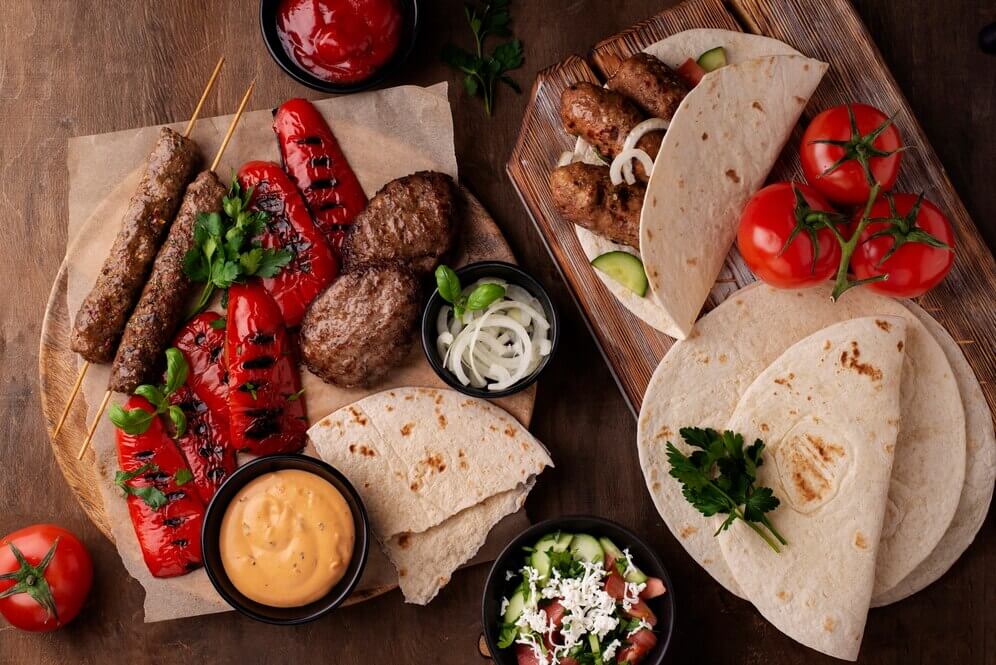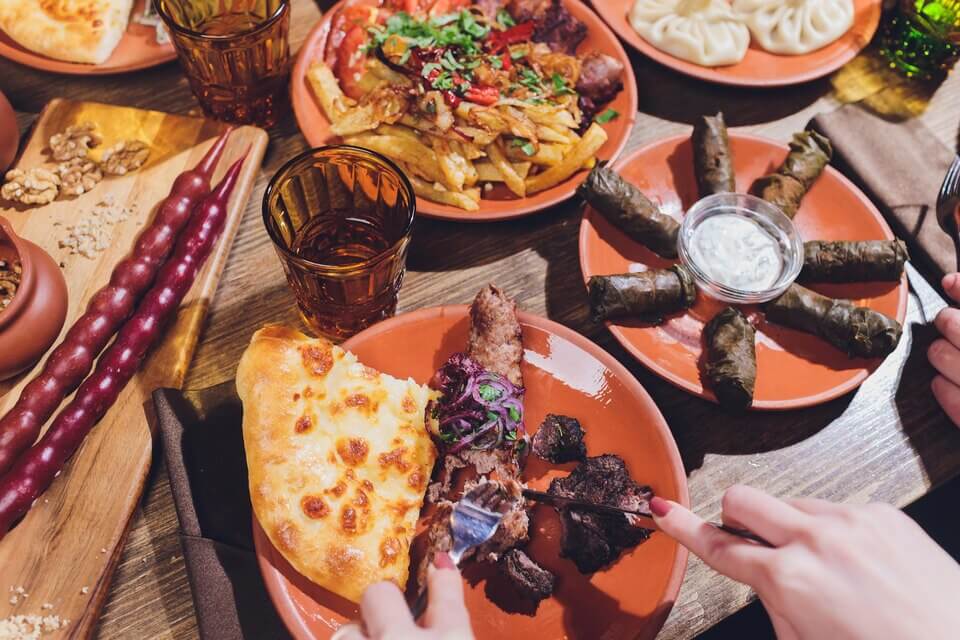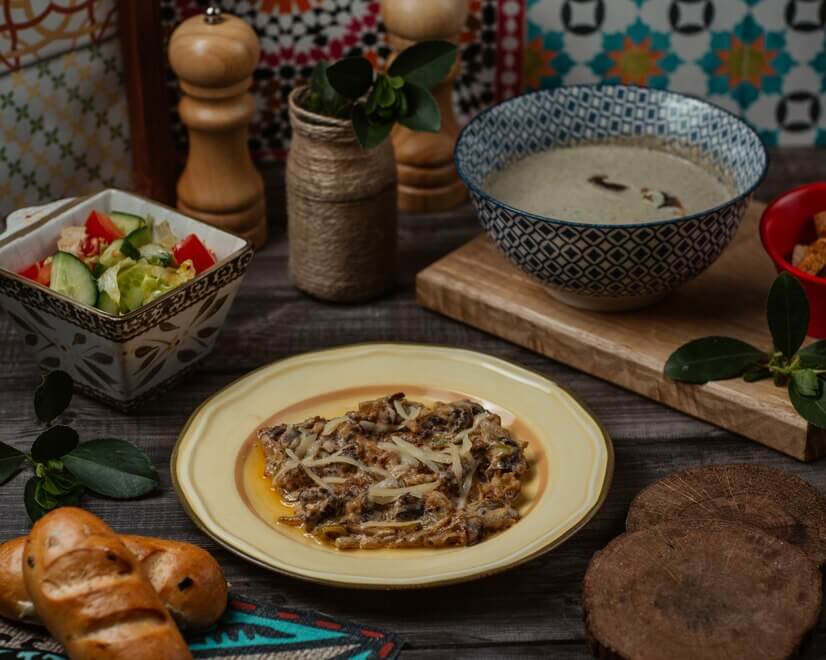Georgian cuisine is often subject to stereotypes, frequently perceived as fatty and calorie-laden. In this article, we will debunk some of the most common myths and explain why most of them are not true. Discover how Georgian dishes can be not only delicious but also beneficial to your health.
Myth 1: All Georgian Dishes Are Very Fatty
This is a popular myth, and while it's partially true, Georgian cuisine offers many light and healthy options as well. For instance, pkhali are vegetable appetizers made from spinach, beets, or cabbage, and they are not high in fat. You can also try lobio, a bean dish often served with cornmeal cakes called mchadi and pickles. Another example is the Georgian salad and nadugi with mint - both dishes are very light and won't weigh you down, and they are also relatively easy to prepare.
Myth 2: Georgian Cuisine Is Mostly Meat
While Georgian cuisine does feature many delicious meat dishes, there are plenty of traditional vegetarian options as well. For example, eggplants with walnuts, elardji, or tutmaji. Ajapsandali is a vegetable stew similar to ratatouille, made with eggplants, tomatoes, and potatoes. Another example is khinkali, which, apart from the popular meat filling, can also be made with potatoes, mushrooms, or cheese. These dishes show that Georgian cuisine can be diverse and include many tasty vegetarian options.

Myth 3: Georgian Cuisine Is Only About Khachapuri and Khinkali
Georgian cuisine is often associated with khinkali, khachapuri, and shashlik (kebabs). Yes, these dishes are very tasty and popular, but Georgian cuisine has a history spanning hundreds of years, and there are many other incredibly delicious dishes. For instance, chashushuli is a traditional Georgian beef stew cooked with onions, garlic, tomatoes, and spices. Chanakhi is a baked dish of meat, eggplants, potatoes, and tomatoes. Satsivi is chicken in a walnut sauce, usually served cold. Meskhetian kada is a traditional pastry that can be either sweet or savory. Apokhti is dried meat, similar to jerky, made from goose, duck, or beef.
Myth 4: Georgian Cuisine Makes You Gain Weight
While it's true that Georgian cuisine includes many flour-based and dairy-rich, generally fatty dishes, there are also many low-calorie options. For example, chrianteli is a cold soup made from cherries, greens, and garlic that refreshes and is low in calories. Nadugi with mint and trout in pomegranate sauce are excellent dietary options. Although the preparation of the latter dish might take some time, the incredible taste and low-calorie content make it worthwhile. The cucumber and tomato salad - a fresh salad of cucumbers and tomatoes dressed with greens and sometimes walnut paste or Kakhetian oil - also demonstrates that Georgian cuisine can be not only tasty but also healthy, helping to maintain a healthy lifestyle without excessive weight gain.

Myth 5: Georgian Cuisine Is Very Spicy
Georgian cuisine does feature many spicy dishes, sauces, and spices, as Georgians love piquant flavors. However, in most cases, you can simply omit the ingredients that make a dish spicy. For example, adjika is a spicy sauce, but it can be made without chili peppers. Satsivi – chicken in walnut sauce – can be prepared without adding hot peppers, while still remaining a rich and flavorful dish. Chakapuli is a stew made with meat, greens, and wine that does not contain spicy ingredients. These examples show that Georgian cuisine can be adapted to suit the tastes of those who prefer milder dishes.
Myth 6: Georgian Cuisine Is All About Dough
While it is true that Georgian cuisine includes many dough-based dishes, such as khinkali and khachapuri, there are plenty of other delicious offerings. For example, mtsvadi is a traditional Georgian kebab made from meat cooked over an open flame. Baje sauce, which complements various dishes, or mushrooms with sulguni cheese on ketsi (a traditional Georgian clay pan), are also noteworthy examples. Another dish worth mentioning is "ajapsandali" - a vegetable stew made from eggplants, tomatoes, and peppers. These dishes illustrate the richness and diversity of Georgian cuisine without the use of dough.

The Pros and Cons of Georgian Cuisine
Benefits of Georgian Cuisine:
- Rich in Vitamins and Minerals: Fresh vegetables, greens, and nuts provide numerous beneficial nutrients.
- Probiotics: Dishes made with matsoni (a type of yogurt) improve digestion.
- Antioxidants: Various spices and greens help combat inflammation and support the immune system.
- Protein: Meat dishes like shashlik and satsivi are rich in protein.
Drawbacks of Georgian Cuisine:
- High Fat Content: Many fatty dishes, such as khachapuri and various sauces.
- Flour-based Products: Frequent consumption of flour-based dishes can lead to weight gain.
- Spicy Dishes: May cause discomfort for people with sensitive stomachs.
What to Try from Georgian National Cuisine?Georgian cuisine offers a rich selection of both healthy and potentially unhealthy dishes, so it's important to maintain a balance and consider individual dietary needs.
RadioCafe Maintains the Balance
At RadioCafe, we strive to maintain a balance by offering a wide variety of dishes. Our Georgian cuisine restaurant offers many traditional Georgian dishes as well as European options, which is beneficial for those not accustomed to the relatively "heavy" Georgian cuisine. You can try healthy dishes such as chikhirtma with pesto, Georgian chicken salad, or Georgian cucumber and tomato salad. Our menu includes a variety of dishes to suit all tastes: vegetarian, meat, and lighter options, spicy and vegetable-based, and so on. We aim to satisfy the culinary preferences of all our guests, offering both hearty traditional dishes and light and healthy choices. Come to RadioCafe and enjoy the variety of flavors and quality of our dishes!









